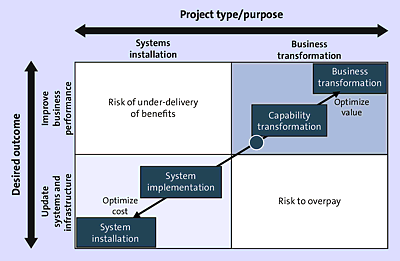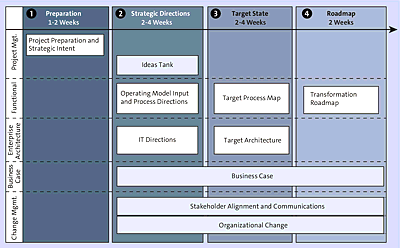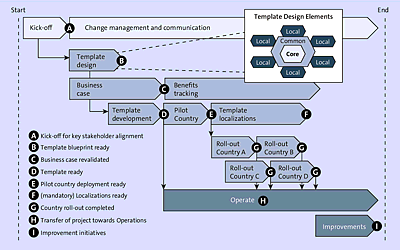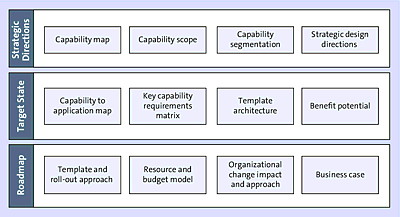10 Migration to SAP S/4HANA
This chapter gives a high-level explanation of the migration options and migration process, including the architecture elements of an SAP S/4HANA road map, and the technical and functional conversation activities to be performed.
The objective of the migration strategy is to define the functional and technical guidance, principles, and methods to best implement your new SAP S/4HANA digital platform.
10.1 Migration Strategy
This strategy should define the required target business process models, the IT architecture to support them, and the roll-out methods while considering all benefits delivered by SAP S/4HANA. The strategy should consider future requirements toward digitalization and Internet of Things (IoT).
The new business processes designed and implemented in the SAP S/4HANA platform allows the optimization and modernization of your current business processes.
10.1.1 Migration Strategy Challenges
In this section, we will cover the support that you will need from the organization, executives, managers, and subject matter experts required involvement in the project, and the main reasons behind their involvement.
Business Transformation
The anticipated degree of business transformation that should be achieved with your implementation program needs to be defined by conducting executive interviews with all relevant senior executives and program stakeholders in the preparation phase of your program.
The definition of future processes depend on responsible process owners that need to be defined for each relevant division of your corporation. Set aside some time to analyze how the SAP technology and business processes changed in the new SAP S/4HANA platform. Comparing the SAP business scenarios implemented in your legacy systems and the new business scenarios proposed in the SAP S/4HANA system should answer the basic questions regarding what the best alternatives are to define your road map and how to achieve all the benefits from the inherent simplifications.
Based on our experience migrating several systems to SAP S/4HANA and completing the business transformation analysis, you should consider the following factors in your analysis:
-
Consider the state of your current business process footprint and its readiness for conversion. Some questions that you can use to define the state of your current business scenarios are as follows:
- Has your current system been customized to allow a more accurate reflection of your business scenarios?
- Do the new proposed SAP S/4HANA business scenarios fulfill the business scenarios in your organization without customizing SAP S/4HANA?
- Is it worth it to migrate the old customized legacy business process to SAP S/4HANA or better to adopt a greenfield approach?
- Evaluate the impact of existing master data models and the new business processes definitions in SAP S/4HANA.
- Understand the SAP S/4HANA certification requirements on your current downstream systems.
The future target operating models and strategic initiatives need to be aligned with your project definitions.
Figure 10.1 shows the Systems Installation and Business Transformation Balance Chart, which represents the balance between a pure technical system transformation and the business transformation efforts. The key decision and balance factors in an SAP S/4HANA migration are used to evaluate the pure migration to SAP S/4HANA of your current system or a total fresh start into an SAP S/4HANA new implementation.
Figure 10.1 Systems Installation and Business Transformation Balance Chart
10.1.2 Defining Your Road Map
In organizations that are ready to make a migration of their current systems, it’s not uncommon to find a state where different business units or divisions show signs of separate strategies and operating models. All these factors trigger an environment of an unclearly defined template, technology, and, applications road map.
When organizations are prepared with an integrated business case to support their systems changes, the results of their analysis result in a stronger business case analysis to support their migration efforts.
10.1.3 The Road Map Design Phase
The first step to address this situation is to define a road map design phase. The design phase should at least answer the questions addressed in the following subsections.
Strategic Intent
To define your system requirements, identify your organization’s market differentiators, and the strategic business capabilities that define your organization’s strengths to achieve business objectives.
The alignment of strategic business requirements and technology is the first step to setting your systems’ implementation road maps.
Operating Model
Define your operating model based on your strategic intentions and compare it with the new business process capabilities offered by SAP S/4HANA. Determine which capabilities should be transformed to achieve the business objectives, as well as how the new business processes in SAP S/4HANA support those objectives.
Your objective here is to find a flexible and agile operating model, which supports your organization objectives, competition, and market requirements.
In our experience, a standard SAP S/4HANA system, with less customization helps your operating model to achieve your business goals.
Process
The organization current business processes need to be reviewed by your business owners, and compare them with the new defined SAP S/4HANA business processes.
The SAP S/4HANA business processes are simplified and adapted to your industry requirements. We suggest that you map these new business processes and implement them This will avoid the migration of old business processes defined in your legacy SAP Business Suite system.
Technology
The identified business requirements and capabilities need to be supported by a technology that ensures your applications, interfaces, and infrastructure to meet the standards of agility and flexibility required by your organization.
In the current business environment, the technology transformation cycles have shorter duration times and change faster than ever.
We recommend to select a technology platform rather than technology components, because the right technology platform can endure all changes and adapt to all new technology components.
Although the details of how each technology component of a platform will change in the next 18 to 24 months are unknown,
It is better to estimate which technology platform will be ready to adapt to the new technology component changes.
The SAP platform defined back in the early 1970s is a platform that has been transforming and adapting successfully for years. The latest transformation of the new SAP S/4HANA platform in the digital era has been proven to be reliable, flexible, and agile.
Value
The following three questions are key to defining the value proposition of the transformation analysis:
- What benefits are associated with new capabilities and planned investments to augment processes and technology?
- How will you ensure value in your stockholders value map?
- Does your road map bring you in the path of resolving digital trends and transformation requirements from the value point of view?
People
A key component of your transformation road map is the involvement and ability of people in your organization to recognize the current business processes defined in the legacy system and, most important, to identify the business needs at the process level.
Most of the organizations migrating to SAP S/4HANA have accumulated years of experience operating in an SAP platform, which is one of the biggest advantages in this new SAP S/4HANA transformation.
The digital capabilities of the SAP S/4HANA system should offer a new dimension to redefine new business processes and flexible self-services analytics. The training of your organization to adopt this new digital reality with your organization experience is fundamental for your success.
Governance
The definition of a well-structured governance framework with the objective to integrate all segments and functions in your organization is another key success factor. This governance framework also should emphasize the involvement of senior executives to sponsor, promote, and validate the system’s transformations to fulfill your business targets and to communicate that management supports it accordingly.
10.1.4 Road Map Design Phase Input Checklist
The use of a checklist to validate that all required inputs were covered during the road map design phase is very useful, and the list can be used to define the following team deliverables of this project phase:
- Strategic design directions document
- Capability and process scope list
- High-level process requirements document
- Future applications architecture
- Transformation road map
- Business case
- Governance and organization change management initial framework
Road Map Definition Project Plan
Based on our experiences developing road maps, we found that your project plan should have at least four key phases (see Table 10.1).
| Project Preparation | Project Preparations, Strategic Intent |
|---|---|
| Strategic Intent |
|
| Target State |
|
| Road Map |
|
Table 10.1 The Road Map Definition Project Activity Segments and Key Deliverables per Activity
Figure 10.2 offers you a suggested approach on how to organize your road map definition project plan.
The sample plan addresses a project plan structure to define a transformation road map. The plan contains four different phases, starting with a project preparation phase, a definition of strategic directions, and a definition of a target state, and finally the definition and release of the transformation road map.
Figure 10.2 Road Map Project Approach
The inclusion of an ideas tank proposed the use of methodologies such as the design thinking method to manage the inclusion of diversity in ideas using multifunctional, and multidisciplinary teams. The main objective of this plan is to define the approach to make your organization successful and use technology to accomplish your organization goals and objectives.
Please note that the suggested road map project approach is intended for large corporations. If your company is a small or medium-sized corporation, the phases and approach may not change, but an analysis of the time to complete each of the phases is required.
Work Package Approach
A work package is a set of deliverables defined for each of the project phases proposed. The work package approach allows you to define a high-level set of activities that support your planning in more detail.
Define your work package content for each phase and gain support from key project sponsors, stakeholders, and senior executives.
Table 10.2 lists the deliverables by project phase. Use this checklist and adapt it to your specific project requirements.
| Phase | Work Package |
|---|---|
| Project Preparation |
|
| Strategic Intent |
|
| Target State |
|
| Road Map |
|
Table 10.2 Definition of Project Deliverables by Phase
The Transformation Road Map and Expected Deliverables
In this section, you’ll learn the detailed steps and expected results of a transformation road map project. Figure 10.3 provides an example of a global system transformation road map. The example illustrates the process and steps by project phase, activities sequence, and project milestones, as well as the expected results of your analysis.
Figure 10.3 Transformation Road Map
The work products defined by phase have a key relationship with each other; Figure 10.4 explains those links and dependencies. This is a high-level example of the results of the road map analysis.
The strategic directors define capabilities by scope, segment, and mapping the capabilities at the functional level to finally conclude in the strategic design directions.
The target state deliverables define the capability applications map and requirements matrix, which support the definition of a target architecture by mapping all potential benefits in the organization.
The road map defines the template and roll-out approach to complete the system transformation, mapping the organization change impact and approach and the definition of the business case to support the investment.
Figure 10.4 Deliverables Relationships: How Key Deliverables Are Linked to Each Other



